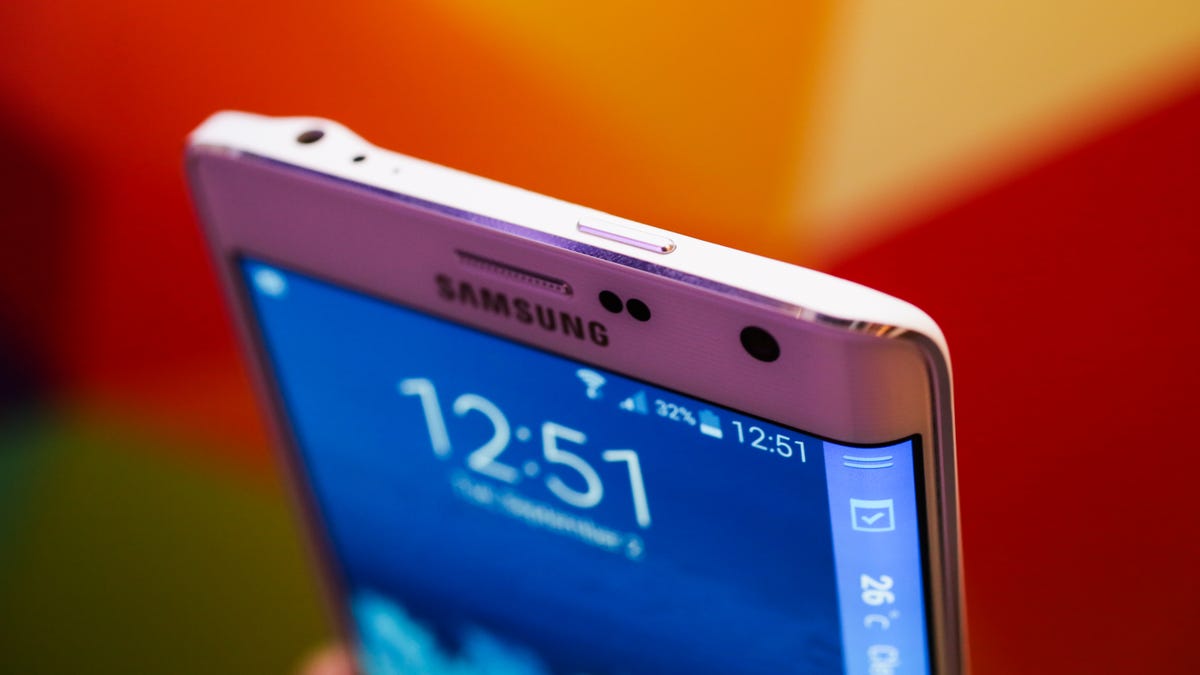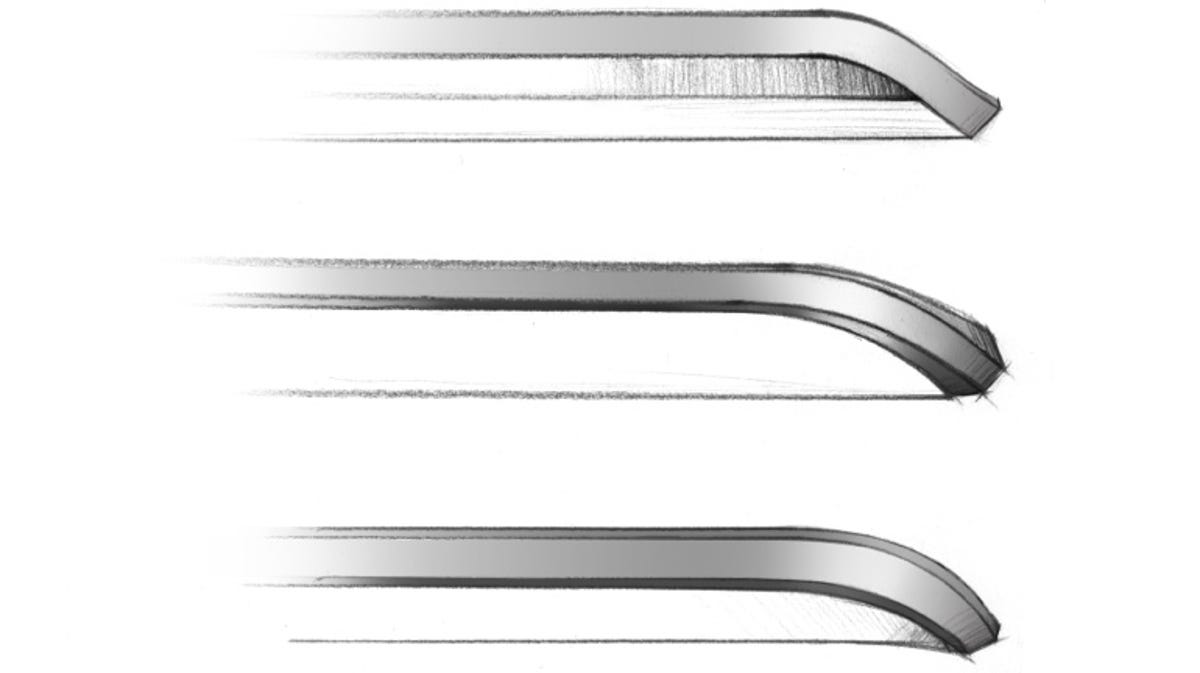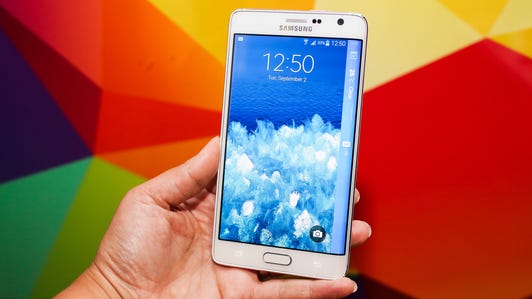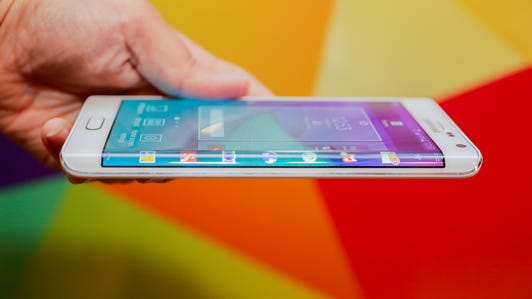
Sarah Tew/CNET
The particular curve of Samsung’s Galaxy Note Edge is the only one of its kind in the world right now, and it didn’t get that way by accident.
At Samsung headquarters in Seoul, South Korea, CNET had an exclusive interview with the company’s designers, who shared a number of the inspirations they drew on when creating the Note Edge’s unique curvature. A real-world diary and revolving doors help explain the Edge display, while designers modeled the shape of the bend on a certain classical sport.
The curve stands for victory
Although he himself doesn’t joust, Samsung concept designer Sunghoo Lee says that the sport of fencing sparked the type of curve that the phone’s designers could use as a guiding motif. The team was looking for curves found within the physical world, propelled by Spanish architect Antoni Gaudi’s famously paraphrased quote that “there are no straight lines in nature.”
Related stories
- Fully reviewed: Samsung Galaxy Note Edge
- Samsung’s kookiest smartphones ever
- Samsung Gear VR and Simband 2: What you should know
The team knew they wanted the flexible display underneath the glass to follow a “sensual” arc, so they looked first at things like ocean waves and air currents before arriving at the swoosh of a fencing sword as it bends off its target. In fact, all three inspirations are represented in the phone’s design.
“During discussion,” Lee explained through an interpreter, “Someone came up with the idea of the curve of victory, based on fencing…That’s too metaphysical, so from that came another idea of [using] fencing gear in the padded clothing, especially [for the Note Edge’s] embossed cover.”
Finding the right curve: Radii and strength
Solidifying the imagery of a curve is one thing; hammering out the practical, technical details are another. Engineers and designers went back and forth over the geometry of the curve, and how that would affect people’s experience using the phone. Being able to see the Edge display from a lot of different vantage points was a main requirement, especially since one of the phone’s tricks is waking up just that part of display for at-a-glance information like the date and time.
Look closely and you’ll see that the curve doesn’t center on a single radius. Instead, multiple radial arcs for different parts of the phone mean that viewers can still see the screen from different angles. “This edge screen has to be visible to people,” a Samsung representative said, “so it can’t bend too dramatically.”


Samsung
Then there was the curve’s physical strength to worry about, since its arc presents a newly exposed surface for drops and breaks. To guard against that, Samsung made the phone’s metal frame a little higher than the screen where the Edge’s edge bends. A drop should, in theory, impact this subtle metal bumper rather than the cover glass it protects.
With a new shape comes a new grip. The curved display meets the backplate in a straight edge on its right side that at first feels unusual (but still balanced) for those used to perfectly symmetrical rectangular slabs. It’s a silhouette that changes the ways people will hold the phone. In order to keep people from accidentally engaging icons and widgets just by picking up their devices, Samsung disables the Edge display long-press and created a dead zone where you’re more likely to place your fingers.
As for lefties navigating on a right-hand curved screen? The phone comes with a mode that flips the icons and surfaces onscreen navigational controls when you use the Edge upside-down. That isn’t necessarily a great user experience for anyone, but it is a workaround, I suppose. (I wonder if we’ll see a future model with a screen that curves on both sides and the option to place the Edge display on the left or right.)
Revolution and evolution
At least two other elements on the Note Edge also reference the physical world where Samsung designers work and live.
The vertical strip of the Edge display was inspired by a paper notebook or diary with numbered or lettered index pages peeking out along the right side. Since Samsung already had the Note line well-established, and the curved AMOLED display under its belt, designers were able to fuse the curve with the concept of an index.
Samsung Galaxy Note Edge rocks a curved sidebar screen (hands-on pictures)






Navigating through the Edge display with your thumb, it’s easy to see why Samsung refers to this strip as the Revolving UI. Revolving doors are everywhere in Seoul, including many of Samsung’s own buildings that make up its gigantic campuses and factories. As with a revolving door, Samsung wanted the thumb’s swiping motion to take little effort as the phone owner cycles through the various menus on the Edge display.
Whatever you do, make it meaningful
The Edge display sure looks different, but the company is dead-set on making it useful, too.
After the Galaxy Round , the Edge is Samsung’s second smartphone to use a shaped display, and the company is just getting started. Samsung also uses a similar panel for some TVs, and for curved-screen wearables like the Gear Fit and Gear S . Samsung isn’t alone in this pursuit; it also faces competition from other panel developers, like Seoul-based rival LG, whose Flex smartphone wasn’t completely rigid, and actually had some give.


Samsung
I wouldn’t blame you for looking at the Note Edge and thinking that it’s simply a way for Samsung to put another curved panel on the market, a solution looking for a problem.
After reviewing the Note Edge , that certainly seems to be part of the story. After all, Samsung concept designer Lee cited that his team “wanted to come up with something uniquely Samsung” when designing a phone with a flexible display.
Whether it’s true or not, the designers’ perspective is nevertheless to make that curved Edge display as useful as possible, enhancing the value beyond even the Note 4 by adding that always-tappable menu strip.
“We don’t solely focus on the beauty or aesthetic quality of a product,” Lee said. “We also think about how we can capture the human behavior and human experience.”
Samsung’s designers occupy a middle space between responding to social design trends and also popularizing them. As core hardware and software becomes more and more similar between rival handsets, offering something different and new is an impetus of every major smartphone player, not just Samsung alone.
Facing a slumping smartphone business, the drive to add compelling value to the basic candy bar smartphone is more critical for Samsung than ever. Lee, and every other Samsung designer, knows it.
“Samsung wants to be the first to set the standard for the next theme,” he said.



